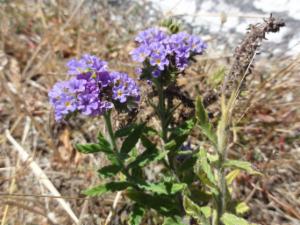Search for Hyporhamphus australis returned 4,679 results.
Refine results
Refine results
Section
- Species (3,422)
- Site Page (621)
- Data resource (322)
- Biodiversity Science project (159)
- Institution (50)
- Support article (39)
- Common Name (21)
- Data provider (21)
- Species list (12)
- Spatial layer (8)
- Collection (4)
Taxonomic rank
- Species (1,855)
- Unranked (1,131)
- Variety (271)
- Subspecies (146)
- Form (12)
- Genus (3)
- Subvariety (2)
- Infraspecific Name (1)
- Species Group (1)
Image available
- Yes (537)
Lifeforms
- Insects and Spiders (543)
- Crustaceans (106)
- Fungi (84)
- Molluscs (81)
- Fish (61)
- Birds (23)
- Mammals (13)
- Reptiles (12)
- Amphibians (2)
Taxonomic status
- Accepted (1,490)
- Synonym (1,270)
- Heteroptypic Synonym (281)
- Homotypic Synonym (212)
- Misapplied (55)
- Miscellaneous Literature (38)
- unreviewed (32)
- Pro-parte Synonym (15)
- Excluded (12)
- unreviewedSynonym (12)
- Inferred Accepted (2)
- Subjective Synonym (2)
- Inferred Unplaced (1)
Conservation status in Australia
- Endangered (10)
- Vulnerable (10)
- Critically Endangered (3)
Conservation status in ACT
- Endangered (1)
- Vulnerable (1)
Conservation status in NSW
- Vulnerable (7)
- Endangered (6)
- Critically Endangered (1)
- Extinct (1)
Conservation status in QLD
- Vulnerable (6)
- Endangered (4)
- Near Threatened (2)
Conservation status in VIC
- Endangered (10)
- Critically Endangered (7)
- Vulnerable (5)
Conservation status in TAS
- Endangered (6)
- Rare (6)
- Extinct (1)
Conservation status in SA
- Rare (7)
- Vulnerable (5)
- Endangered (4)
Conservation status in WA
- Endangered (4)
- Critically Endangered (3)
- Priority 1: Poorly-known species (3)
- Priority 3: Poorly-known species (3)
- Priority 4: Rare, Near Threatened (3)
Conservation status in NT
- Endangered (3)
- Vulnerable (1)
-
Biodiversity Science project: ALA species sightings and OzAtlas
The ALA species sightings and OzAtlas tools provide a means for anybody to add new species sightings directly to the ALA on an ad-hoc basis, anytime and anywhere. The Atlas of Living Australia provides a simple species sighting recording tool (online web form and mobile apps) for anyone to log new species observation occurrence records.
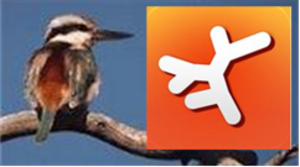
-
Biodiversity Science project: Paterson's curse and Viper's bugloss biocontrol
Echium plantagineum, Echium vulgare Paterson's curse and viper's bugloss [Paterson's curse](https://www.mla.com.au/research-and-development/animal-health-welfare-and-biosecurity/poisonings/toxic-plants/patersons-curse/) and viper's bugloss are toxic winter pasture weeds that outcompete pasture crops and poison grazing animals. Six biocontrol agents have been released in Australia to combat the spread of Paterson's curse and viper's bugloss. 1...

-
Biodiversity Science project: Veteran and Significant Trees of the Redlands
Veteran trees may be trees that have reached a great age compared with others of the same species. However a veteran tree can be any age that exhibits veteran characteristics (such as a wide trunk, hollowed trunk or reduced crown). These veteran characteristics may be due to old age, natural damage, management, or the tree’s environment...

-
Biodiversity Science project: Crofton weed biocontrol
Ageratina adenophora Crofton weed Crofton weed is a rapid-spreading weed that is invasive in many areas along the eastern coast of Australia, particularly cleared land that is not grazed (such as public reserves). Crofton weed reduces the carrying capacity of grazing land and restricts movement of stock and machinery. It is unpalatable to cattle, and poisonous to horses...
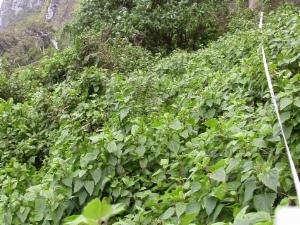
-
Support article: Working with threatened, migratory and sensitive species information in the ALA
Jump to section: Threatened and migratory species Threatened and migratory species in the ALA Sensitive or Restricted Access species Sensitive or Restricted Access species lists at the ALA Displaying sensitive species information FAQs Which species in a specific location are on threatened or migratory lists? How do I make the location of my sighting non-specific? The Atlas of Living Australia provides information and manages data on threatened species, sensitive or restricted access species...
-
Biodiversity Science project: The Fluker Post Project
The Fluker Post Research Project is a citizen science environmental monitoring project developed by Dr Martin Fluker, Victoria University, Melbourne, Australia. It is designed to allow community members to contribute towards the ongoing care of various natural environments by taking photographs from fixed photo-points (Fluker Posts), emailing them into FlukerPost@gmail.com, and having them arranged in chronological order within a Picasa Web Album...
-
Biodiversity Science project: Bridal creeper biocontrol
Asparagus asparagoides Bridal creeper Bridal creeper *Asparagus asparagoides* is a highly invasive environmental weed that is designated a [Weed of National Significance](http://weeds.ala.org.au/WoNS/bridalcreeper/) in Australia. Bridal creeper's above ground mass smothers native vegetation, and its thick tuberous root mat can prevent regeneration of canopy species. Birds and other animals are attracted to bridal creepers bright red berries, which facilitates rapid spread of the...

-
Biodiversity Science project: platypusSPOT
Platypuses, like most Australian wildlife, are potentially impacted by a range of human-induced changes to their environment. Although protected in Australia, platypuses are currently regarded as ‘a species of least concern’ by the International Union for the Conservation of Nature. This is largely because the overall distribution of platypuses has not changed significantly since the European settlement of Australia...
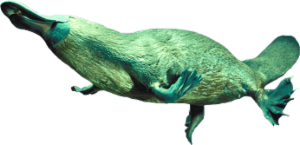
-
Biodiversity Science project: Searching for the yellow-bellied sea snake
We aim to expand our knowledge on the current distribution of sea snakes on Australia's coasts, particularly for one species, Hydrophis platurus, the yellow-bellied sea snake. Although sea snakes are protected species in Australia, the IUCN Sea Snake Specialist group has identified that 34% of all sea snake species are 'data deficient', which makes it difficult to implement effective conservation management...
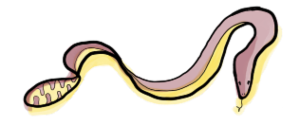
-
Biodiversity Science project: Blue heliotrope biocontrol
Heliotropium amplexicaule blue heliotrope Blue heliotrope is an invasive pasture weed species in Australia that can cause poisoning when ingested by grazing livestock. One biocontrol agent has been released for blue heliotrope. 1. Blue heliotrope leaf beetle *Deuterocampta quadrijuga* This biocontrol agent is expected to reduce the seed production of blue heliotrope, resulting in a decline in local blue heliotrope infestation densities and reduced weed spread into new areas...
